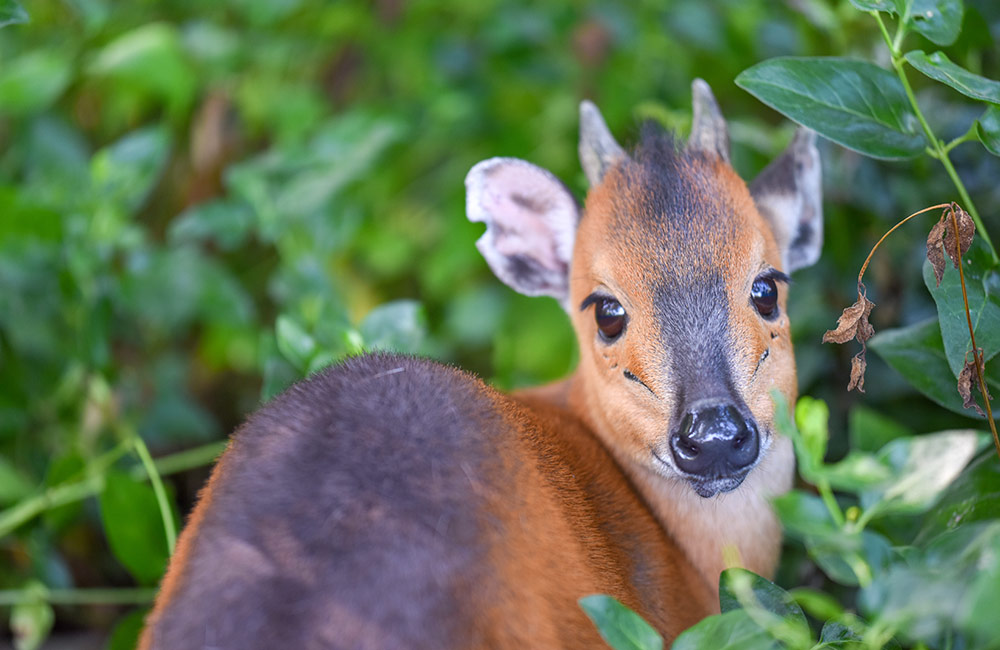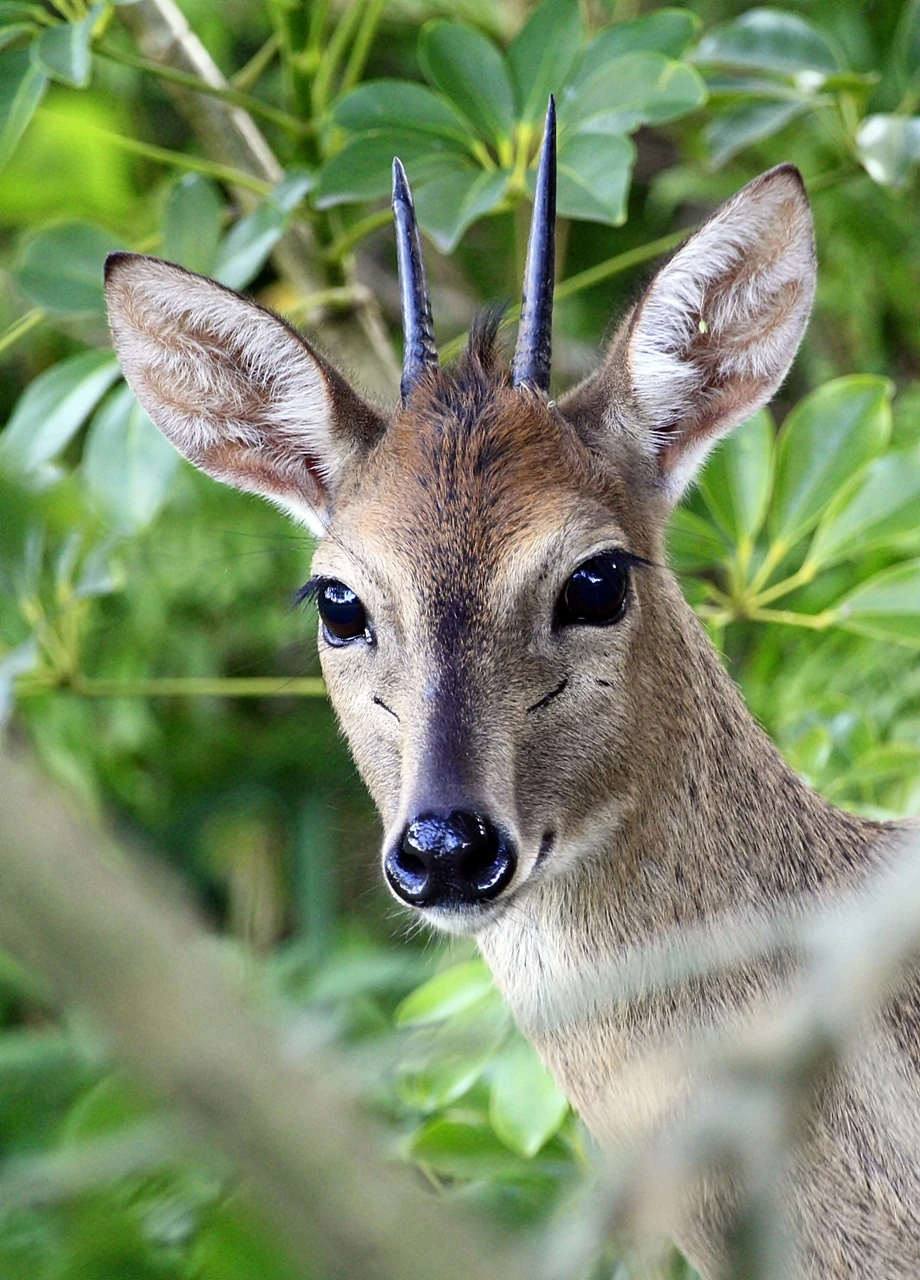Top What Is A Duiker Animal You Must Know
The common name refers to a characteristic habit of taking off at high speed in a series of diving jumps when alarmed. Their name, duiker, is taken from an afrikaans word meaning ‘to dive’ and references their habit of diving for cover if threatened.
Duiker Facts, History, Useful Information and Amazing Pictures
The springbok (2,000,000+) and maxwell’s duiker (2,137,000) both have a higher population.
What is a duiker animal. Duiker definition, any of several small african antelopes of the cephalophus, sylvicapra, and related genera, the males and often the females having short, spikelike horns: This trait is the source of the name “duiker,” which in dutch means “diver.” environment and habitat can influence the overall body shape and coloration of animals. Duiker means ‘to dive’ and the animal might be called a duiker because they dive into the bush to hide from predators.
This animal is endemic to the central and southern regions of the african continent. The blue duiker is a very secretive animal, their population counts and estimates are therefore difficult to establish. Duikers tend to live individually or in pairs.
A common duiker is a small antelope that belongs to the mammalian class due to its ability to give birth to young ones. Continue reading to learn what you can do to help. 22 different species of duiker duck and dive to safety all across the continent.
Duikers are browsers, eating leaves, fruits and shoots from shrubs and trees. It is one of africa’s most abundant antelopes. Duikers are small to medium sized antelopes.
The blue duiker (philantomba monticola) is the most common african antelope, by population. Any of several small african antelopes comprising two genera (cephalophus and sylvicapra) The name “duiker” was derived from a dutch word that means “diver,” which refers to the animal’s way of diving itself into the tangles of plants and shrubbery.
This species feeds on fruits, seeds, leaves, and one of the few antelopes. It’s the perfect name, because this antelope spends most of its days diving to safety in high grass and thickets. There are about 20 species of duiker.
There are two main types of duikers which live in either the rainforest or the savanna and surrounding areas. It thrives in various habitats, brimmed with ample vegetation, where they can seek refuge. Duiker means “diving” in afrikaans.
The blue duiker is a very small herbivorous mammal, which inhabits the thickest coastal forests in western, southern and eastern africa. They are widespread across the african continent only being absent from areas of dense forest and desert. The common, or grey, duiker is a tiny, shy antelope with only the males having short horns.
The common duiker is a small antelope which is found across africa. There are around 14 subspecies for these animals. The 22 extant species, including three sometimes considered to be subspecies of the other species, form the subfamily cephalophinae.
“common” is a most apt description of this small antelope, as it enjoys the widest distribution of all of the african antelopes. By contrast, the larger (and more famous) impala population is just 2,000,000. It is also called the common duiker or the grey duiker.
Environment and habitat can influence the overall body shape and coloration of animals: Duiker derives from the afrikaans duikerbok (“diving buck”), which describes the sudden headlong flight of duikers flushed from hiding. The bush duiker is more slender, with larger ears, than the forest duiker.
The common duiker scientific name is sylvicapra grimmia. The duiker is a fascinating animal with over 21 species, some of which are endangered. See also where did oats come from.
Adult males stand 500mm at the shoulders and females are about 20mm higher. It has a flat forehead, large eyes, small ears with a line of white, large nostrils, a broad mouth, and agile lips. Blue duiker population is 7,000,000 and is considered conservative.
The blue duiker is a small antelope found in africa. The species is subject to extensive hunting for bushmeat throughout its range. Duikers live in central, western, eastern and southern africa.
This backed duiker (cephalophus silvicultor) is the largest antelope in its species in the world. They come under the artiodactyla order of the bovidae family. Duikers have longer back legs than front legs.
The duiker finds itself caught between a thicket and an open space. It is also called the bush duiker, grey. Duiker facts & trivia for kids.

Bush Duiker (Mammals of Kenya) ·

Grey Duiker. Common, Grey, Grimm's bush duiker front
Duiker Common Duiker Information for Kids
TrekNature Common duiker Photo

Common duiker Wikipedia, the free encyclopedia South

Animals of West Africa Charles Paddock Zoo Your

blueduiker_ BirdLife eThekwini KZN
Common Duiker Mammals South Africa
Duiker Facts, History, Useful Information and Amazing Pictures

Common Duiker 4215 Common Duiker male, a beautiful

One of World's Rarest Animals, Walter’s Duiker

Baby duiker! Cute animals images, Baby animals, Animals
Common Duiker Wildlife Vagabond

Common Duiker (Sylvicapra grimmia) South african animals

Duiker Mammals, African wildlife, Animals

The common duiker. Animals, Mammals, Common
Common Duiker Facts, Diet, Habitat & Pictures on

Walter's Duiker Animal Database FANDOM powered by Wikia
Post a Comment for "Top What Is A Duiker Animal You Must Know"